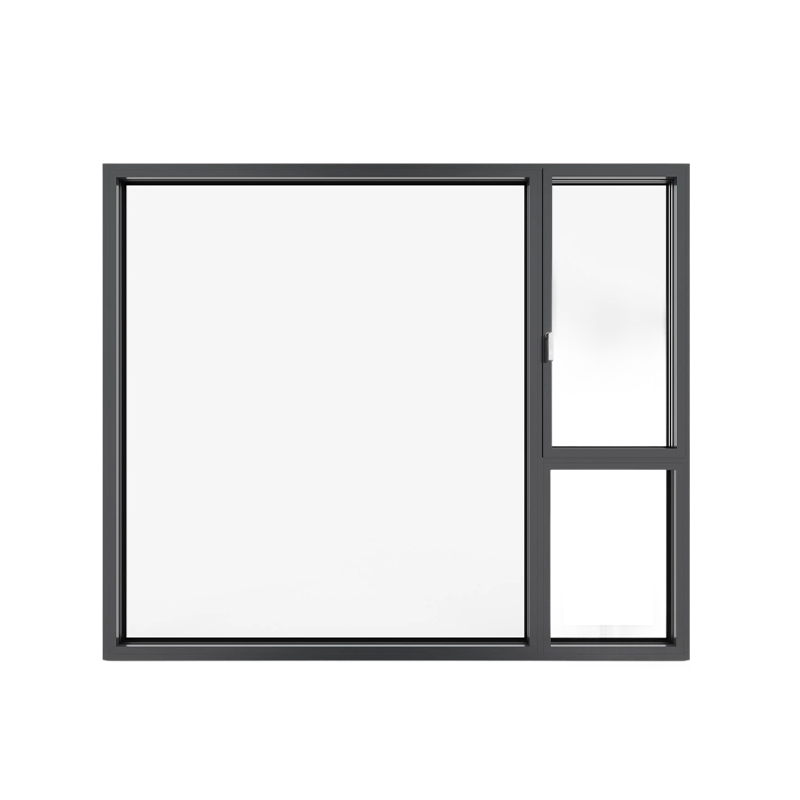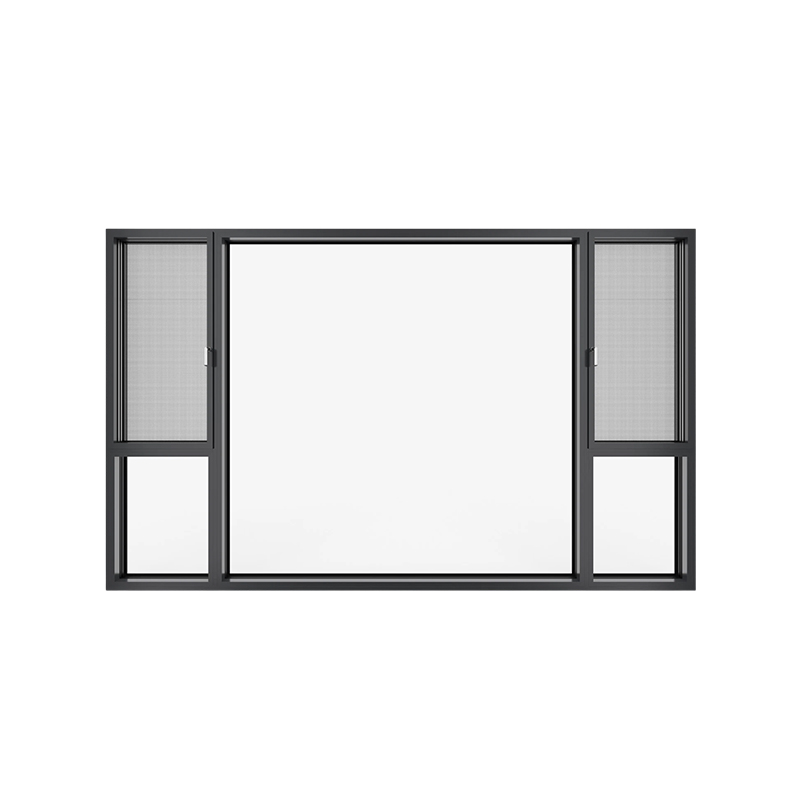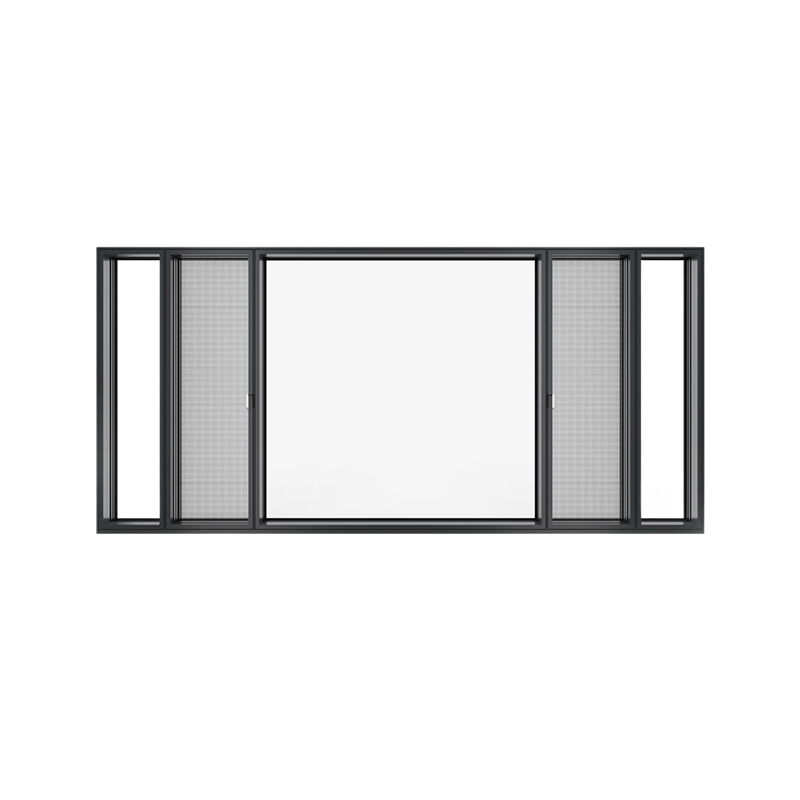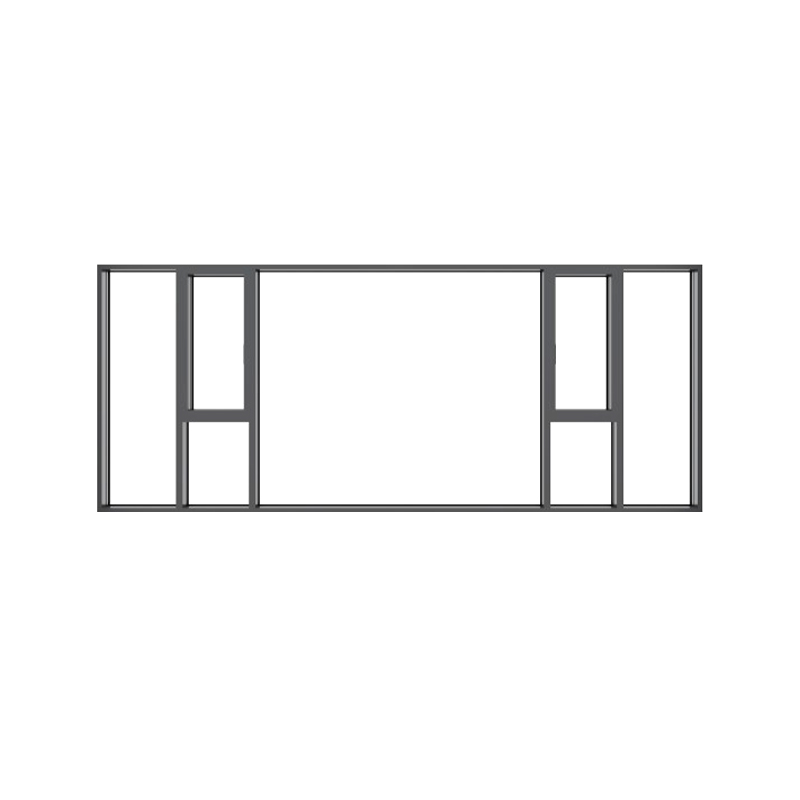How does the passive inward opening window system create truly healthy indoor air circulation?
Release Time : 2025-08-14
In modern cities, people spend approximately 90% of their time indoors, and air quality is directly related to their health and comfort. However, traditional window ventilation methods have numerous drawbacks: they allow dust, noise, and rainwater to enter, and open windows cause heat loss in winter and introduce high-temperature, high-humidity air in summer. As a ventilation solution designed specifically for high-performance buildings, the passive inward opening window system is becoming a key technology for achieving healthy indoor air circulation.
1. Precisely control ventilation volume to avoid "over-ventilation" or "under-ventilation"
The greatest advantage of the passive inward opening window system lies in its adjustable ventilation modes, particularly the "tilt ventilation" function. When the window is tilted, the upper end of the sash tilts inward, creating a controllable ventilation gap. This design allows air to enter from above the window, preventing cold air from blowing directly onto the user and preventing the discomfort of drafts. Furthermore, the incoming air diffuses along the ceiling, mixing with the warm indoor air before sinking downward, creating a gentle airflow and significantly improving thermal comfort. More importantly, the ventilation volume in tilt-in mode is significantly less than when fully open. Users can flexibly adjust the opening angle based on the indoor and outdoor temperature difference, air quality, or occupancy density, achieving precise ventilation. This avoids the "cooling down" problem often associated with traditional window openings, and reduces energy waste caused by excessive ventilation.
2. Collaborating with fresh air systems to create an "active + passive" dual circulation system
In high-standard energy-efficient buildings,passive inward opening window systems are often used in conjunction with mechanical fresh air systems to form a combined "active + passive" air circulation system. Fresh air systems utilize heat recovery technologies (such as heat exchange cores) to achieve continuous air supply and exhaust, ensuring a 24-hour air exchange rate while also recovering heat or cooling from the exhaust air, resulting in energy savings exceeding 75%. Passive inward opening window systems, on the other hand, serve as "emergency ventilation" or "natural ventilation enhancement" measures. During spring and autumn, when air quality is good and temperature and humidity are suitable, or when people are home, they can be activated in tilt-in mode to introduce fresh air, reducing reliance on mechanical systems and lowering energy consumption. This "smart switching" mode ensures both air quality and optimal energy utilization.
3. High-efficiency filtration and insect and dust control improves air intake quality
Passive inward-opening window systems typically feature high-performance dust screens, insect screens, and removable filter systems. These components effectively block pollutants such as pollen, PM2.5, and mosquitoes from entering the room, making them particularly suitable for people with allergies or those living in high-pollution urban areas. Some high-end models also incorporate activated carbon filters to absorb odors and harmful gases, further purifying the incoming air. Furthermore, the window frame utilizes multiple sealing strips (such as EPDM) to ensure extremely high airtightness when closed (meeting the Passive House standard of n50 ≤ 0.6 h⁻¹), preventing unfiltered outdoor air from infiltrating through gaps and truly ensuring "only clean air" enters the room.
4. Promotes air convection and eliminates indoor "dead zones"
When traditional outward-opening or sliding windows are opened, air tends to concentrate near the window, making it difficult to circulate air throughout the entire house. The inward-tilting design of the passive inward-opening window system directs airflow upward, pushing it along the ceiling for thorough mixing with the indoor air. Combined with exhaust vents on the other side of the room (such as mechanical exhaust in the bathroom or kitchen), this creates a stable "inlet-exhaust" airflow path, effectively eliminating "air dead zones" like corners and behind wardrobes, preventing moisture, mold, and carbon dioxide accumulation.
5. Intelligent Upgrades for Automatic Environmental Response
With the development of smart homes, passive inward-opening window systems are increasingly integrating sensors and automatic control systems. For example, smart windows equipped with CO₂ sensors can automatically activate inward-tilting ventilation when indoor CO₂ concentrations exceed the standard. Humidity sensors can activate after bathroom use to quickly remove moisture. And rain and wind sensors can automatically close in the event of rainfall for safety. This closed-loop "sense-judgment-act" system ensures truly unmanned, 24/7 operation of healthy air circulation.
The passive inward-opening window system is not only part of the building envelope but also a "smart valve" for healthy indoor air. Through precise ventilation control, collaboration with fresh air systems, efficient filtration, optimized airflow organization, and intelligent upgrades, it creates a low-energy, highly comfortable, and sustainable air circulation system. In today's pursuit of green buildings and healthy living, the passive inward opening window system is becoming an indispensable technology for creating truly healthy indoor environments.
1. Precisely control ventilation volume to avoid "over-ventilation" or "under-ventilation"
The greatest advantage of the passive inward opening window system lies in its adjustable ventilation modes, particularly the "tilt ventilation" function. When the window is tilted, the upper end of the sash tilts inward, creating a controllable ventilation gap. This design allows air to enter from above the window, preventing cold air from blowing directly onto the user and preventing the discomfort of drafts. Furthermore, the incoming air diffuses along the ceiling, mixing with the warm indoor air before sinking downward, creating a gentle airflow and significantly improving thermal comfort. More importantly, the ventilation volume in tilt-in mode is significantly less than when fully open. Users can flexibly adjust the opening angle based on the indoor and outdoor temperature difference, air quality, or occupancy density, achieving precise ventilation. This avoids the "cooling down" problem often associated with traditional window openings, and reduces energy waste caused by excessive ventilation.
2. Collaborating with fresh air systems to create an "active + passive" dual circulation system
In high-standard energy-efficient buildings,passive inward opening window systems are often used in conjunction with mechanical fresh air systems to form a combined "active + passive" air circulation system. Fresh air systems utilize heat recovery technologies (such as heat exchange cores) to achieve continuous air supply and exhaust, ensuring a 24-hour air exchange rate while also recovering heat or cooling from the exhaust air, resulting in energy savings exceeding 75%. Passive inward opening window systems, on the other hand, serve as "emergency ventilation" or "natural ventilation enhancement" measures. During spring and autumn, when air quality is good and temperature and humidity are suitable, or when people are home, they can be activated in tilt-in mode to introduce fresh air, reducing reliance on mechanical systems and lowering energy consumption. This "smart switching" mode ensures both air quality and optimal energy utilization.
3. High-efficiency filtration and insect and dust control improves air intake quality
Passive inward-opening window systems typically feature high-performance dust screens, insect screens, and removable filter systems. These components effectively block pollutants such as pollen, PM2.5, and mosquitoes from entering the room, making them particularly suitable for people with allergies or those living in high-pollution urban areas. Some high-end models also incorporate activated carbon filters to absorb odors and harmful gases, further purifying the incoming air. Furthermore, the window frame utilizes multiple sealing strips (such as EPDM) to ensure extremely high airtightness when closed (meeting the Passive House standard of n50 ≤ 0.6 h⁻¹), preventing unfiltered outdoor air from infiltrating through gaps and truly ensuring "only clean air" enters the room.
4. Promotes air convection and eliminates indoor "dead zones"
When traditional outward-opening or sliding windows are opened, air tends to concentrate near the window, making it difficult to circulate air throughout the entire house. The inward-tilting design of the passive inward-opening window system directs airflow upward, pushing it along the ceiling for thorough mixing with the indoor air. Combined with exhaust vents on the other side of the room (such as mechanical exhaust in the bathroom or kitchen), this creates a stable "inlet-exhaust" airflow path, effectively eliminating "air dead zones" like corners and behind wardrobes, preventing moisture, mold, and carbon dioxide accumulation.
5. Intelligent Upgrades for Automatic Environmental Response
With the development of smart homes, passive inward-opening window systems are increasingly integrating sensors and automatic control systems. For example, smart windows equipped with CO₂ sensors can automatically activate inward-tilting ventilation when indoor CO₂ concentrations exceed the standard. Humidity sensors can activate after bathroom use to quickly remove moisture. And rain and wind sensors can automatically close in the event of rainfall for safety. This closed-loop "sense-judgment-act" system ensures truly unmanned, 24/7 operation of healthy air circulation.
The passive inward-opening window system is not only part of the building envelope but also a "smart valve" for healthy indoor air. Through precise ventilation control, collaboration with fresh air systems, efficient filtration, optimized airflow organization, and intelligent upgrades, it creates a low-energy, highly comfortable, and sustainable air circulation system. In today's pursuit of green buildings and healthy living, the passive inward opening window system is becoming an indispensable technology for creating truly healthy indoor environments.







